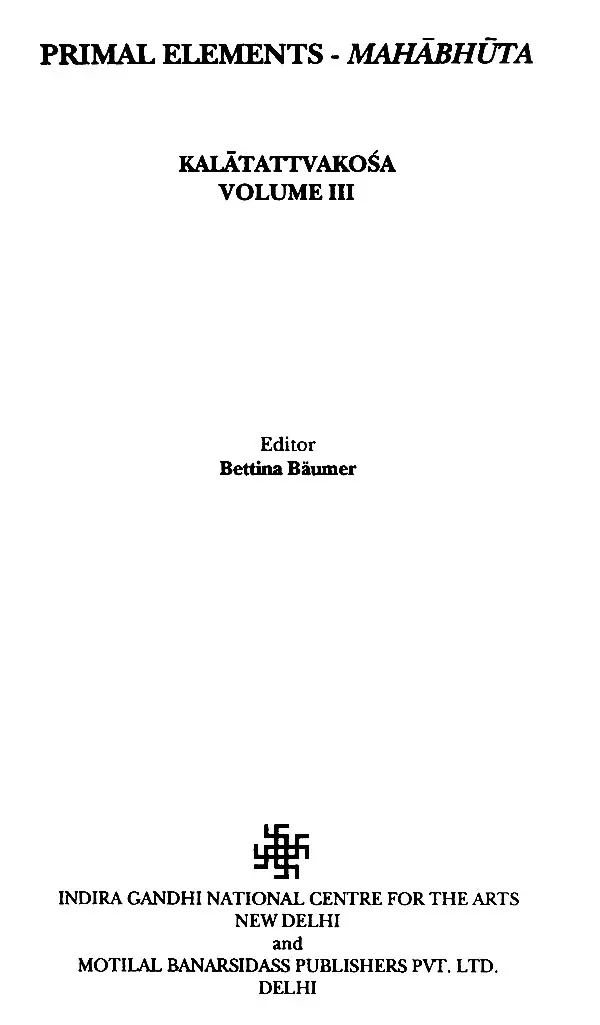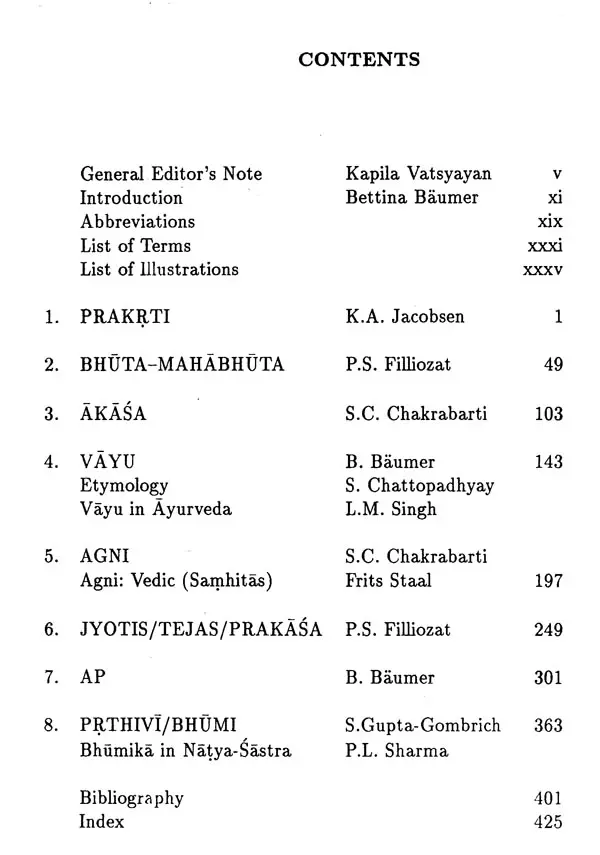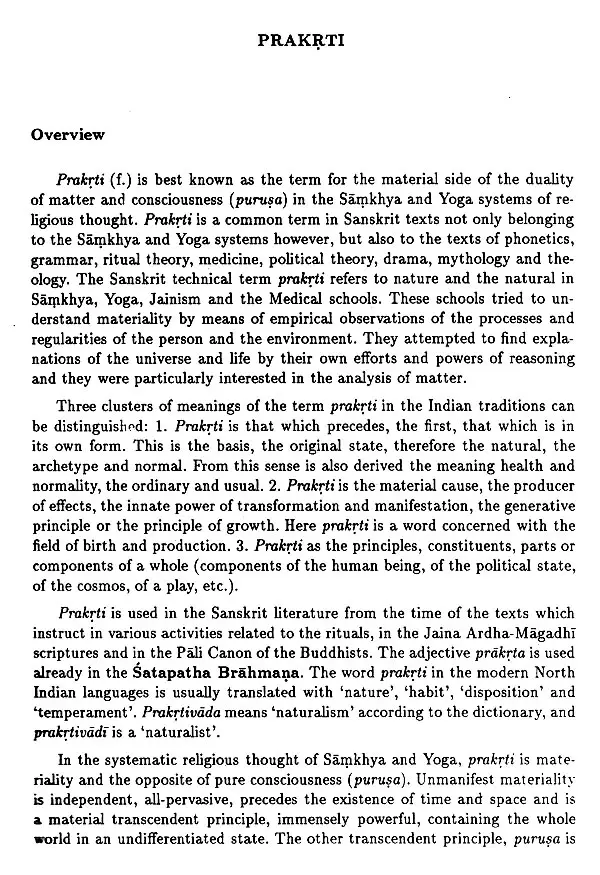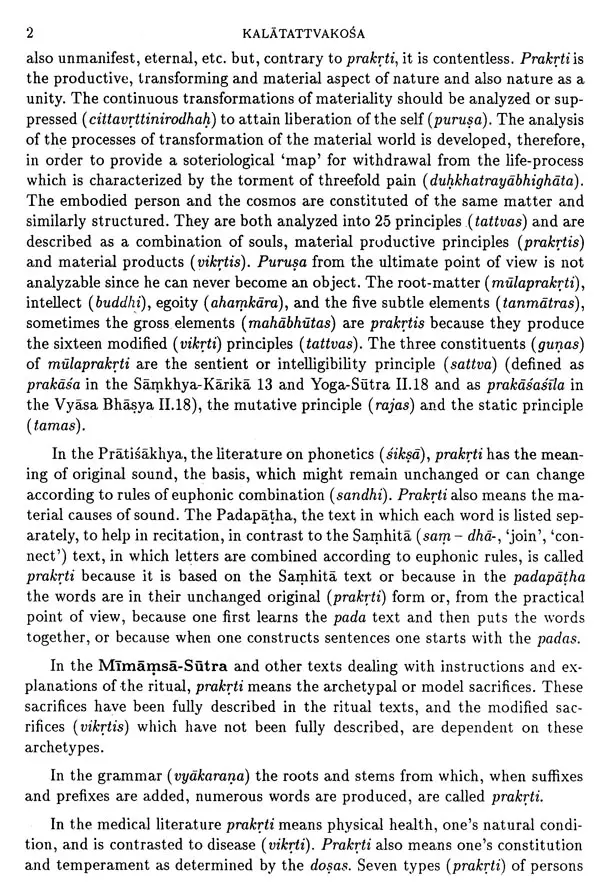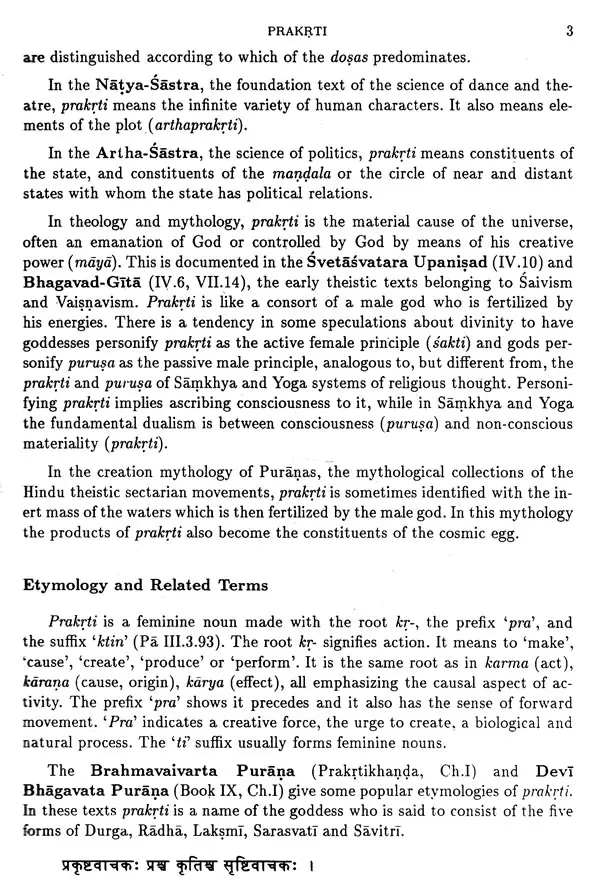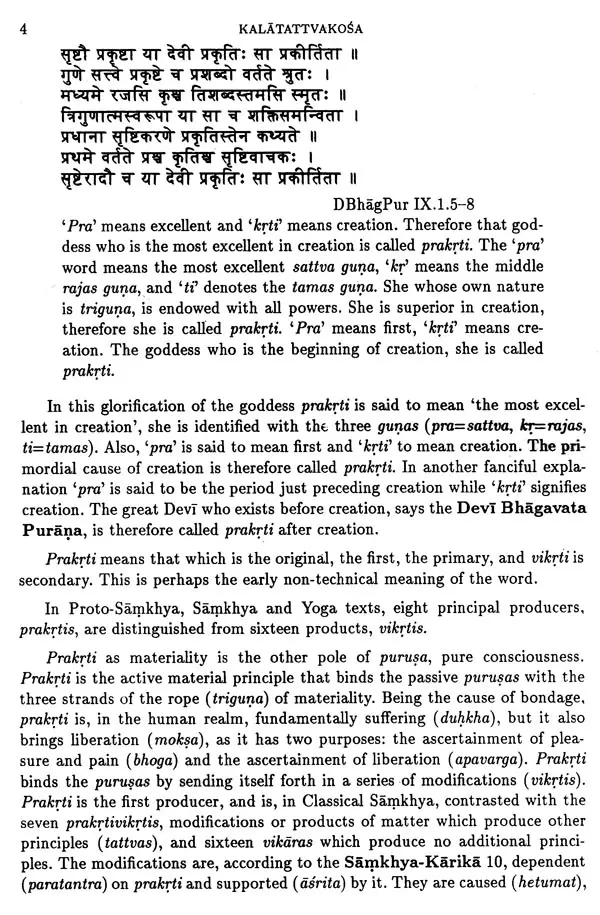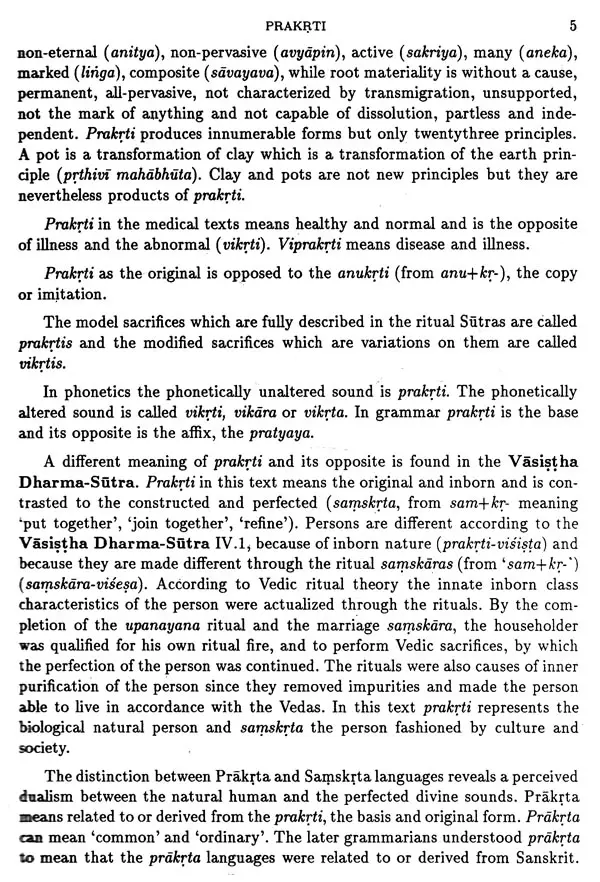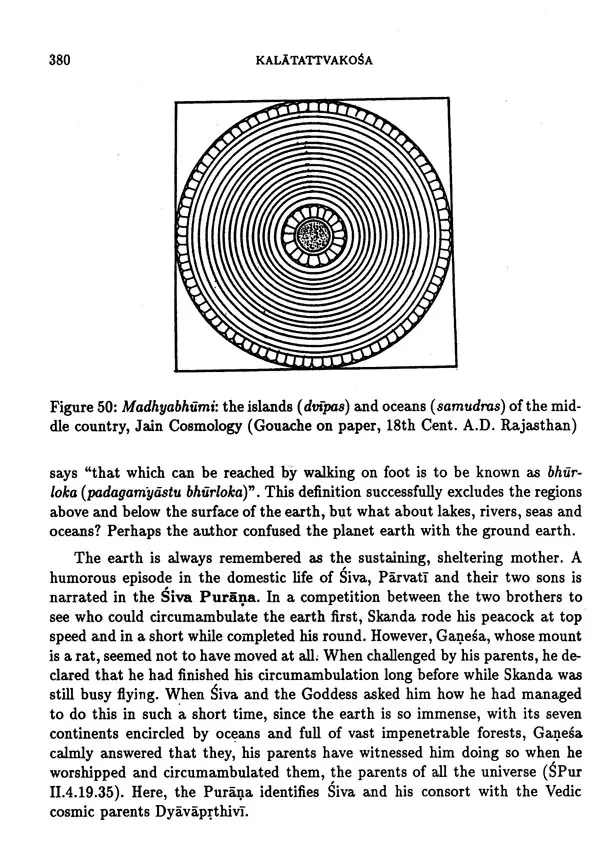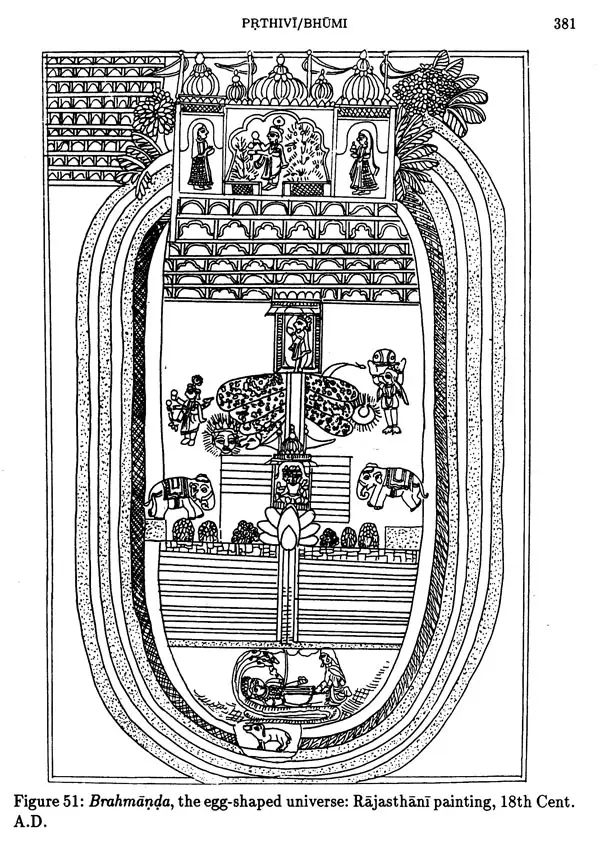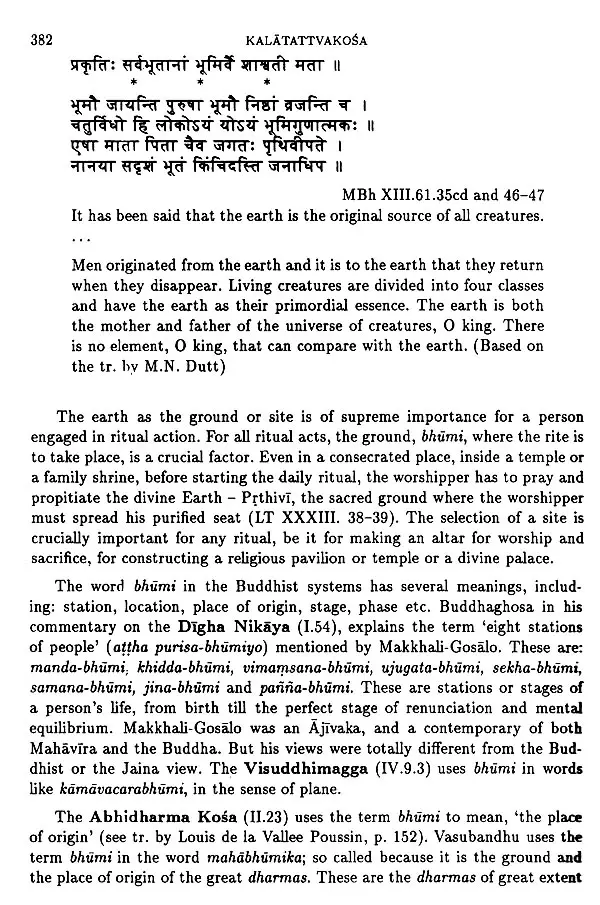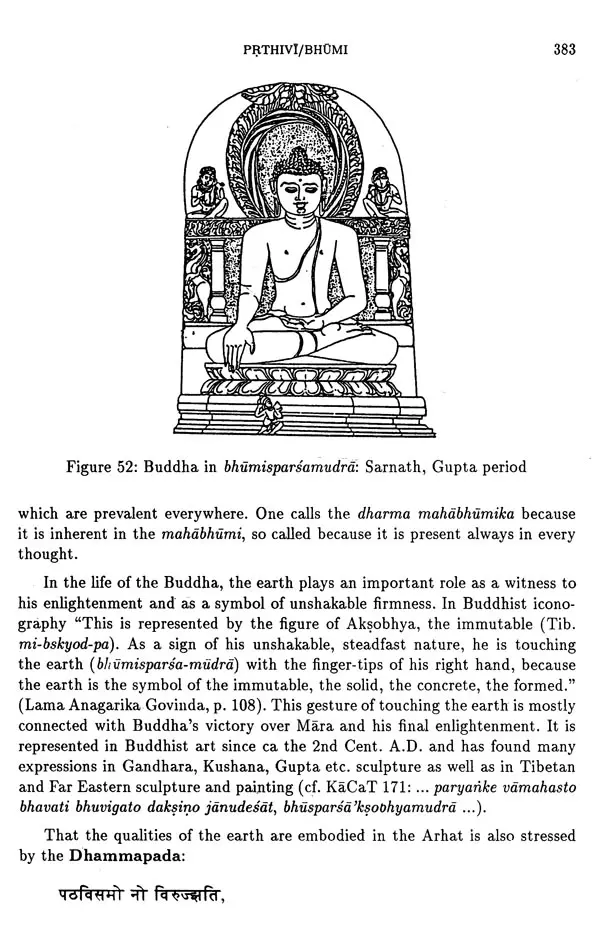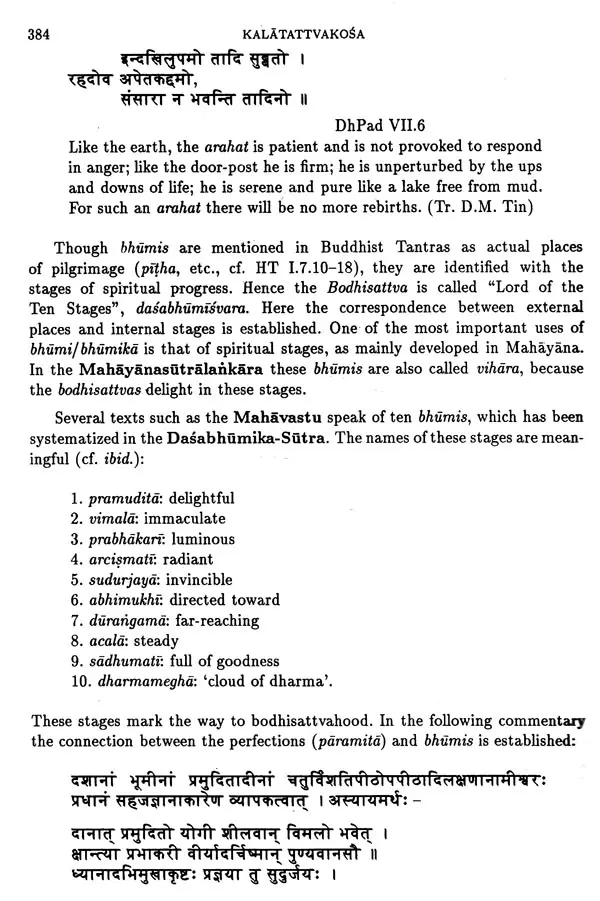
कलातत्त्वकोश - Kalatattvakosa : A Lexicon of Fundamental Concepts of the Indian Arts, Primal Elements - Mahabhuta (Vol-III)
Book Specification
| Item Code: | UAD837 |
| Author: | Bettina Baumer |
| Publisher: | Indira Gandhi National Centre for the Arts and Motilal Banarsidass Publishers Pvt. Ltd. |
| Language: | Sanskrit Text with English Translation |
| Edition: | 1996 |
| ISBN: | 9788120814028 |
| Pages: | 482 (Throughout B/W Illustrations) |
| Cover: | HARDCOVER |
| Other Details | 10.00 X 8.00 inch |
| Weight | 870 gm |
Book Description
I. General Background
The Indian Arts are like the branches of a vast tree of culture, thought, science, ritual and spirituality, and they cannot be understood in isolation. They are based on fundamental Indian conceptions of the cosmos and of man, of space and time, of the body, mind and self. These have crystallized in the Sanskrit tradition as specific concepts which pervade virtually all disciplines. Theories of aesthetics rest on philosophical concepts but are also deeply linked with medical thought and with mystical experience. The wide range of Indian art forms are interrelated through shared aesthetic theories, and there are also basic principles of form manifested in the various media employed, so that the Arts themselves are interdependent in much the same way that interrelationships exist between the sciences, religions and philosophies. The Arts form an integral part of the total culture.
So far, the Indian Arts have been largely studied in isolation, with much emphasis being given to chronologies and stylistic analysis along Western lines. The questions of meaning and the interdependence between the Arts and other disciplines have received relatively less attention. Literary and art-historical studies have rarely been combined, so as to do justice to both. There is a vast literature containing theoretical texts on the Indian Arts (Silpa-Sastra, Vastu-Sastra, Sangita-Sastra) which has not yet been sufficiently investigated and applied to the interpretation of the Arts themselves. The self-interpretation of the tradition in which the Arts have developed has yet to be carried out, partly because an adequate method of understanding the texts has been lacking.
In the context of a Seminar on "Shastric Traditions in Indian Arts" 1 T.S. Maxwell has thrown light on the interrelationship of Sastra and Prayoga, of theoretical literature and practical application. Against the view that the Sastras are dry classifications which are often contradicted by artistic practice, he asserts: "Those texts epitomised and consolidated the culture in which the artist lived and worked, and from which he drew his inspiration; Silpasastra, as the body of texts which effectively legitimized his calling within the culture, has endeavoured to preserve parts of this vision... All art-forms are practical and symbolic expressions of cultural intelligence; they carry a passive burden of assumed or inherited knowledge and an active burden of conscious knowledge which is intentionally communicated. Once one becomes aware of these two interpenetrating levels, the chaotic background of archetypes and the ordered foreground of didacticism, the methods and skills of the artist are defined, just as they are defined by shastric precept: the master silpin must have (without claiming another's province for his own) knowledge of all the arts, from metrics and poetic imagery to music and dance, painting and sculpture, in increasing detail, his own field being placed last in the list, emphasising its juniority but also the legitimacy of its traditional descent; and he must be able to mobilise this knowledge in connexion with yoga and meditational techniques in order to visualise fully, from brief descriptions, the forms he will create. As an actor in and an agent of his society, he must be open to the cultural sources of that society." (pp. 11-12). Thus the texts present various kinds of sources for the artist, and to interpret art without them means to reduce our understanding of the total context in which art has its meaning.
The Kalatattvakosa project aims to bridge an important gap in the understanding of Indian culture by selecting 250 fundamental concepts (based on Sanskrit) from the various disciplines, schools and texts and focussing on their occurrence and their significance in the Arts. Presented in the form of a lexicon, Kalatattvakosa gives each concept in its various contexts and provides the textual sources, both in the original and in translation. It is a research tool for scholars and all who are interested in penetrating to the meaning contained in artistic creativity, expression, form and purpose.
The criteria of selection are based on the frequency of interdisciplinary occurrence and the wide-ranging importance of the terms. Only concepts having meaning in a range of disciplines and associated literatures have been selected: rasa, for example, is used in the Vedas, and in medical (Ayurvedic) and chemical (Rasasastric) contexts, as well as in aesthetics. Purely technical terms within a particular tradition have thus been omitted; these will be treated in separate Technical Glossaries (for example on Sangita-Sastra and Silpa-Sastra). The lexicon concentrates on terms of fundamental and widespread significance in the primary sources, and thus avoids both tacit interpretation by partiality of selection, and the ongoing interpretive controversies of the secondary literature.
The criteria governing the selection of primary sources are two: the texts must be considered representative of a discipline or school of thought, and they must be the oldest available sources of that school complete with commentaries. The texts quoted do not pretend to be exhaustive, but aim to represent the most important literatures and disciplines. Thus in addition to the Vedas, Vedangas, Smrti, Itihasa, Puranas, Darsanas, Tantras and Agamas, the Natya-Sastra along with Abhinavagupta's commentary, for example, plays a central role in establishing links between concept and art, drama (natya) being the origin of the different Arts and of aesthetic theory.
The limitation to Sanskrit sources and related material (Prakrit, Pali), including cognates (Greek, Latin), results from the nature of the undertaking. It is the intention to cover the entire Indian tradition, and Kalatattvakosa is the Sanskritic section of the project. The editors are fully aware that the Arabic-Persian sources require an equal treatment of their basic aesthetic, philosophical and artistic concepts, and that the Sanskrit sources must be complemented by their counterparts in the Dravidian languages. Indeed, to present as complete a picture as possible of the development of a concept in the Indian tradition, it should be traced through the Middle Indian to modern Indian literatures, with indication of the more important semantic developments. This is not feasible at the present stage, and restraint has had to be exercised within the articles presented here.
The entries cannot therefore pretend to be exhaustive. The tradition is so rich, and the source material so varied, that it is not possible to present a complete historical picture of each and every concept with all its variations; and as the focus is on the Arts, philosophical discussion has had to be limited to a minimum to prevent overbalance. Within these limitations, the absence of a preconceived interpretive scheme should enable the reader from any discipline to identify interconnections between basic concepts from the original texts in pursuit of his own specific interest, and to spread his research beyond the immediate confines of the lexicon.
